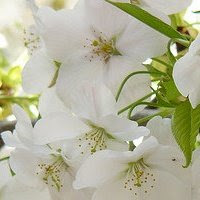Numerous events and fairs also take place throughout Japan in connection with the New Year season, which is the most important annual day for the Japanese.
Festivals and Events
December 15-18 On-matsuri of Kasuga Shrine in Nara, featuring a masquerade procession.
December 17-19 Hagoita-ichi (Battledore fair) of Asakusa Kannon Temple in Tokyo.
December 31 Okera Mairi of Yasaka Shrine in Kyoto. Sacred fire ceremony.
December 31 Namahage in Oga Peninsula, Akita pref. Men disguised as devils make door-to-door calls to houses with children.
January 1 New Year’s Day. From the first to third, almost all companies, factories and businesses are closed. Families celebrate the New Year enjoying special dishes, wearing their best kimono or dress, and visiting shrines and temples to pray foor good health and happiness for the year.
January 6 Dezomeshiki or the New Year’s Parade of Firemen in Tokyo with acrobatic stunts on top of tall ladders.
Mid-January (for 15 days) first Sumo Tournament, Tokyo.
Day before Coming-of-Age Day Grass Fire Ceremony on Mt. Wakakusayama, Nara.
Early February for 7 days Snow Festival in Sapporo, Hokkaido. The most famous snow festival in Japan with many huge, elaborate snow and ice sculptures.
Early or Mid-February Snow Festivals in Asahikawa, Abashiri and other cities in Hokkaido.
February 3 or 4 Setsubun or Bean-Throwing Festival is observed at leading temples across the country.
February 3 or 4 Latern Festival of Kasuga Shrine, Nara.
February 16-17 Bonden Festival in Yokote, Akita. Dozens of Bonten, symbol of the God of Creativity, are carried by young men.
February 15-16 Kamakura Matsuri in Yokote, Akita. Snow houses enshrining the God of Water are erected
3rd Sat. of February Eyo or Hakada Matsuri (naked festival) at Saidaiji Temple, Okayama.
NATIONAL HOLIDAYS
January 1 New Year’s Day
2nd Monday in January Coming-of-Age Day
February 11 National Foundation Day
March 21 (or 20) Vernal Equinox Day
April 29 Greenery Day
May 3 Constitution Memorial Day
May 5 Children’s Day
3rd Monday in July Maritime Day
3rd Monday in September Respect-for-the-Aged Day
September 23 (or 24) Auntumnal Equinox Day
2nd Monday in October Health-Sports Day
November 3 Culture Day
November 23 Labor Thanksgiving Day
December 23 The Emperor’s Birthday
Note :
(1) When a national holiday falls on Sunday, the following Monday becomes a holiday.
(2) When a day (except for Sundays and the above) is sandwiched between national holidays, it also becomes a holiday. This rule is applicable on the 4th of May.








Nice post, sister.